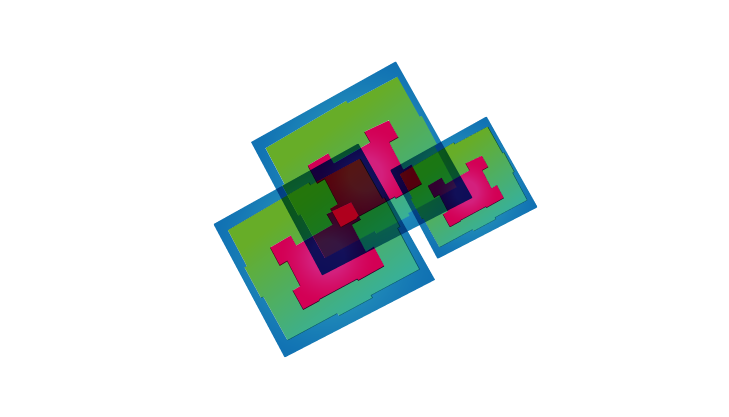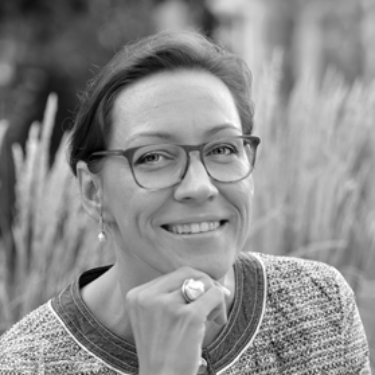MAB20’s academic track includes four Paper Sessions, where the selected full papers and Late-Breaking Works (LBW) will be presented via Zoom. Each session will feature six 5-minute presentations followed by a discussion. This session will be moderated by Asst. Prof. Dr. Karolina Zielinska-Dabkowska (Gdańsk University of Technology). See below the selected papers to be presented in this session:
Playing with the Spirit of a Place: Designing Urban Interactions with Hybrid-Resolution Media Façades
Peggy Liu (The University of Sydney) and Luke Hespanhol (The University of Sydney).
Abstract
Play is an integral part of the human experience that has been brought into urban city development in the form of digital media, particularly high-resolution interactive screens or projections, and responsive low-resolution LED lighting. While many studies have looked into these media separately, there lies a gap in considering the simultaneous use of high- and low-resolution media façades (hybrid-resolution), particularly in urban interaction. This study involves the creation of an interactive “ghost”; character combining projection and LED strips on a large public façade to discover design implications and perceptions towards such an interface. It addressed at first non-hybrid resolution designs, involving observations and semi-structured interviews in-the-wild. The outcomes of that study then supported further studies into designing hybrid media façades, including a discussion on social benefits of playful urban interactions and its potential for creating playful cities.
Moving Walls and Talking Floors: Design Considerations on Magical Media Architecture Experience
Eléni Economidou (Center for Human-Computer Interaction, University of Salzburg)
Abstract
An ocular-centric fixation governs the majority of examples in both traditional and media architecture. Stepping away from this predominance, the three technology-augmented installations described in this contribution focus primarily on multi-sensory spatial interactions. To trigger curiosity and establish engagement, we make use of magic as a metaphor to encourage playful exploration of the installations’ possibilities and speculation on their modus-operandi enigmas. This combination elevates the exhibition space as it appoints the human body as the key constituent of the experience. Placed at the entrance hall of an integration school (for Deaf, hard-of-hearing and hearing children and staff ), our installations are aimed at raising population awareness by highlighting this population’s particularities. In this paper, we detail the constellation of magical design characteristics of our artifacts and propose a set of considerations that could bring forth magical media architecture experiences.
metaPLACE: Co-designing Sino-Australian Urban Media for Participatory Placemaking
Ian McArthur (UNSW Sydney | Faculty of Arts, Design & Architecture (ADA)) and Fang Xu (UNSW
Sydney | Faculty of Arts, Design & Architecture (ADA)).
Abstract
Despite the differences of our economic systems, models of governance, cultures, and population sizes, China and Australia share common destinies as societies with rapidly urbanising futures. This presents significant challenges for urban planning, placemaking, and the sustainability of livable, urban communities in our cities. The experimental project ‘metaPLACE’ aims to use Australian derived participatory urban media to test the effectiveness of co-designed urban media interfaces in helping government and urban planners better understand and design for rapidly urbanising cities. Using Chongqing as a case study, metaPLACE tests the theoretical assumption that participatory urban media (large and small interactive screens, installations, façades, and devices) can act as a co-designed interface between diverse community, industry, and government stakeholders. The research assesses how interactive media installations can build engagement and dialogue between citizens and other city stakeholders about the places in which they live, work, and play. Our initial findings suggest despite the current political tensions, Sino-Australian co-operation can transcend disciplinary silos, and culturally biased assumptions about design to collaboratively identify placemaking problems and co-design novel urban media concepts and solutions.
Developing a Place-oriented Approach for Interactive Installations – a Preliminary Design Framework
Yu Kao (QUT), Glenda Caldwell (QUT) and Jared Donovan (QUT).
Abstract
Media architecture has become increasingly common in public spaces, including public displays, media facades and interactive installations. These design interventions bring not only new appearances to the city but also facilitate new experiences and interactions in public spaces. Along with the continued interest in developing a better understanding of the impact of media architecture on people’s sense of place, we seek to develop a place-oriented approach that incorporates the consciousness of place to create installations that resonate with people and places. In this study, we reviewed existing media architecture installations to develop a better understanding of the opportunities and challenges for media architecture to support placemaking. Based on this analysis, we reflect on what we have learned from the field study and explore how we might translate field knowledge to a design framework that supports a place-oriented approach.
Storystamp: Evaluating the Impact of the Place-oriented Approach for Placemaking
Yu Kao (QUT)
Abstract
Storystamp is an interactive installation designed using the place-oriented design approach that we have developed previously as part of a research project titled: A place-oriented approach: from field knowledge to design framework. The approach was developed based on the literature of place and a field study of existing media architecture artefacts. It aims to provide place-oriented design framework that enables designers to engage with and incorporate the uniqueness of places when designing media architecture artefacts. In this study, we provide an evaluation on the impact of the framework on designing media architecture artefact for placemaking. Using the case of Storystamp, we conducted a field study that consists of observations on how people interact it. We also interviewed people who interacted with the Storystamp. Based on the findings from this field study and interviews, we report on people’s interactions and experiences with the Storystamp to identify the potential for place-oriented design artefacts to facilitate placemaking.
Media Architecture in Architecture Studio Education Capturing Dynamics in the Process.
Waldemar Jenek, Glenda Caldwell, Jared Donovan, Veronica Garcia Hansen, Matt Adcock, Mingze Xi, Kavita Gonsalves, (Queensland University of Technology), (CSIRO’s Data61)
Abstract
Virtual design environment tools such as virtual reality can refine the methods of existing Media Architecture design processes. Architecture has the potential to become dynamic and adapt rather than providing static characteristics. Media Architecture can be understood as materials or objects with dynamic properties, such as interactive sources of light or moving elements, which embody the physical space on an architectonic scale. In the higher education context, virtual design environment tools are able to refine traditional teaching approaches while discovering new ways of design thinking and creating design solutions in architecture schools. These visual communication technology tools allow architects to engage more effectively with stakeholders to create a connection that goes beyond the planning process. This research focuses on the use of immersive technologies in the design of Media Architecture in architecture schools in Australia and Germany. Based on a literature review of architectural education, Media Architecture, and virtual design environment tools a recommendation for a design unit was proposed, implemented and evaluated in an architectural design studio setting. The most common approach in architectural education, how to learn to design, is a project-based approach called”design studio”. In a “design studio”, future architects explore ideas and concepts, create and evaluate alternatives, and decide and act. This research emphasises on architecture students’ learning experience, who have been exposed to the emerging discipline of MediaArchitecture and the state-of-the-art technology approach to de-sign Media Architecture with virtual reality. We conducted three case studies with advanced undergraduate architecture students in their third year and masters in Australia and Germany. Within these case studies, we developed educational content for designing media Architecture while using virtual design environment tools in a higher education context. In order to motivate and evaluate students experiences in these scenarios Keller’s motivation design model ARCS (Attention, Relevance, Confidence, Satisfaction) was utilized in the design studio context to design Media Architecturewith virtual design environment tools. A response of the students to the new studio content and approaches in the educational environment was evaluated through surveys, interviews, and observations. We are in progress of reviewing the collected data at this stage. The results of the case studies will allow us to explore educationalMedia Architecture approaches further, such as simplifying con-tent delivery and eliminating issues. The outcome of this study are preliminary recommendations for teaching architecture students the use of virtual design environment tools in the design process of Media Architecture.

